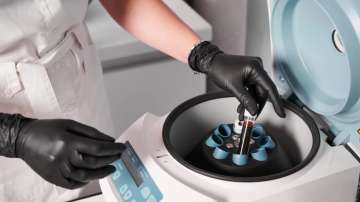Each year, countless lives are lost due to organ failure. Organ donation is a selfless act that allows someone to continue living beyond their own death and gives others a chance at a new life. When a person is still alive, they can save at least one life by donating their organs, and a brain-dead patient can give the gift of life to up to eight people.
What is organ donation?
Organ donation involves legally obtaining an organ with the purpose of helping someone in need medically. The donor may give consent while they are alive or, after their death, their next of kin may give consent. There are two types of organ donation: living donor organ donation and deceased donor organ donation. In living donor organ donation, a person can donate one of their kidneys or a part of their liver to a loved one without affecting their own kidney or liver function or overall health. The liver of a living donor fully regenerates within four months and will ultimately regain full function. The recovery period for a kidney donor varies, but most donors regain approximately 80% of their pre-donation kidney function within three months of the donation. To make donor surgery more widely accepted, laparoscopic harvesting is now being used, which reduces the post-operative hospital stay, causes less pain, and has a better cosmetic outcome.
In deceased donor organ donation, a person can donate multiple organs and tissues after brain stem or cardiac death. This allows a part of the donor to continue living with another person, giving the recipient a new lease on life.
Organ donation in India
Unfortunately, India has a very low rate of deceased organ donation compared to the western world. It is estimated that approximately 500,000 people die in India each year that could have been prevented with timely organ transplants. Organ donation in India is just starting to gain traction, and the reasons for the delay include a lack of awareness, spiritual beliefs about life after death, and generally negative attitudes towards organ donation. There are many myths and social taboos associated with organ donation. Be the Match has shared some facts to break a few myths here:
Myth: Donating is very painful for the donor.
Fact: In general, donating is not as painful as one may expect it to be.
Contrary to popular belief, donating blood stem cells is not painful. Television shows and movies often portray blood stem cell donation, particularly bone marrow donation, as something frightening, but the reality is not as dramatic. The level of discomfort during recovery varies from person to person, and side effects may include back pain, fatigue, headache, or bruising for a few days or weeks. Despite this, most donors say that helping to save a life was worth it and that they would do it again.
MYTH: To donate bone marrow one has to remove bones.
FACT: Mostly peripheral blood stem cells are donated which involves similar process to donating plasma.
Donating bone marrow does not involve opening up or removing bones. In fact, the majority of blood stem cell donations are done through a process called peripheral blood stem cell donation, which is similar to donating plasma and does not require surgery. Only a small percentage of donations involve a surgical procedure.
Don't miss these:
Low cholesterol to improved digestion, know surprising benefits of jimikand
10-Minute workout routines that anyone can try and doesn't require any equipment & gym membership
